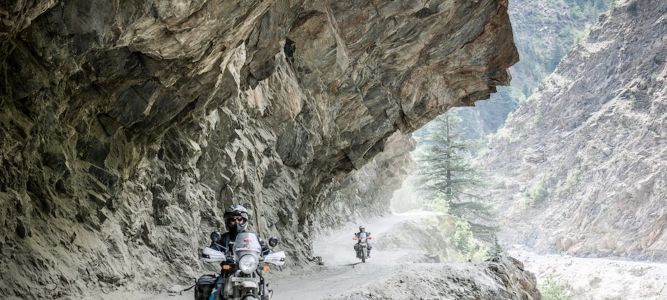How to Safely Explore the World’s Jungles: A Complete Travel Guide
- 1. Introduction to Jungle Exploration
- 2. Safety Tips for Jungle Travel
- 3. Essential Gear for Safe Jungle Adventures
- 4. Real-Life Jungle Exploration Stories
- 5. How to Plan Your Jungle Adventure Safely
1. Introduction to Jungle Exploration
The allure of jungles is undeniable: dense forests filled with exotic wildlife, cascading waterfalls, and an untamed beauty that offers adventure at every turn. For thrill-seekers and nature lovers, jungles represent the ultimate destination for exploration. But, as enticing as these jungles may be, venturing into them requires careful planning and awareness. Exploring the world’s jungles can be incredibly rewarding, but it also presents unique challenges that demand preparation, respect for the environment, and an understanding of the risks involved.
In this guide, we will cover how to safely explore the world’s jungles. From expert safety tips and essential gear to real-life travel stories, we’ll ensure that your jungle adventure is both exhilarating and secure.
2. Safety Tips for Jungle Travel
While jungles are some of the most captivating environments on Earth, they can also be dangerous if you’re not well-prepared. Here are some essential safety tips to keep in mind when planning your jungle exploration:
1. Choose a Guided Tour
If you’re new to jungle exploration, it’s highly advisable to book a guided tour with a local expert. Guides have extensive knowledge of the terrain, wildlife, and potential hazards. They also know the safest routes and can offer insights into the local environment. Whether you're venturing into the Amazon rainforest, the jungles of Southeast Asia, or the African Congo, a guide can make your journey both safer and more enriching.
2. Understand Wildlife Hazards
Jungles are home to a wide range of animals, some of which can be dangerous. From venomous snakes to large predators like tigers or jaguars, it's important to understand the wildlife you might encounter. Always listen to your guide’s advice on how to behave around animals, and be aware of common risks, such as insect-borne diseases like malaria or dengue. Carry insect repellent and take the necessary vaccinations before traveling to jungle regions.
3. Prepare for the Elements
The weather in jungles can be unpredictable. Heavy rainfall, humidity, and extreme heat are all common. Make sure to bring lightweight, moisture-wicking clothing that can handle both the heat and the rain. A poncho or waterproof jacket is essential for keeping dry, while sturdy, comfortable footwear will protect you from mud and rough terrain. Be ready for temperature fluctuations, especially if you’re trekking through higher altitudes where it may be cooler at night.
4. Stay Hydrated and Nourished
Jungle trekking can be physically demanding. It’s crucial to stay hydrated and well-nourished, so always carry sufficient water and high-energy snacks like trail mix, energy bars, or dried fruit. In more remote areas, water sources may not be safe to drink, so bring purification tablets or a portable water filter. Having the right nutrition and hydration will keep your energy levels high throughout your adventure.
3. Essential Gear for Safe Jungle Adventures
In addition to understanding the safety precautions, it’s important to have the right gear for your jungle exploration. The following items are essential for a safe and successful trip:
1. Lightweight Backpack
A lightweight, durable backpack is essential for carrying your gear, water, and food. Choose a backpack with multiple compartments for easy access to your essentials. Opt for one with a rain cover, as sudden downpours are common in jungles.
2. Navigation Tools
In dense jungles, it’s easy to get lost. Bring a reliable map, a GPS device, or a compass to help you navigate. In some regions, a satellite phone or two-way radio may be necessary for communication in case of an emergency.
3. First-Aid Kit
A well-stocked first-aid kit is a must-have for any jungle adventure. Include items like bandages, antiseptic wipes, insect bite creams, and pain relievers. If you're traveling in remote areas, bring any specific medications you might need, including anti-malarial drugs if required by your destination.
4. Protective Clothing
Protective clothing is vital for staying safe in the jungle. Long sleeves, pants, and sturdy boots will protect you from thorny plants, insect bites, and rough terrain. Consider wearing clothing treated with insect repellent for added protection against mosquitoes and ticks. A wide-brimmed hat will shield you from the sun and help prevent dehydration.
5. Flashlight and Spare Batteries
When exploring jungles, especially if you plan on hiking at dawn or dusk, bring a flashlight or headlamp. Make sure to carry spare batteries, as power sources can be hard to find in remote areas.
4. Real-Life Jungle Exploration Stories
Real-life jungle adventures provide the most authentic insight into the challenges and rewards of jungle travel. Here are some experiences shared by travelers who’ve ventured into the world’s most famous jungles:
Jessica’s Amazon Adventure
Jessica, a travel blogger from the US, recently journeyed into the Amazon rainforest with a small group of fellow adventurers. “The jungle was overwhelming in its beauty,” she recalls. “But the humidity was intense, and the constant buzz of insects took some getting used to. Our guide made sure we stayed safe, explaining how to avoid venomous creatures and where to find fresh water.” Her advice? “Take it slow, trust your guide, and never underestimate the power of the jungle. It’s a place that demands respect, but the rewards are incredible.”
Mark’s African Safari Jungle Trek
Mark, a wildlife photographer, spent several weeks trekking through the jungles of Uganda, seeking to capture images of mountain gorillas. “The terrain was tough, with steep hills and dense vegetation,” he says. “I was constantly amazed by the diversity of the jungle, from the towering trees to the playful monkeys. However, it’s vital to be aware of your surroundings at all times—wildlife can be unpredictable.” Mark’s top tip? “Always maintain a safe distance from animals, and never approach them unless you’re with an expert guide.”
5. How to Plan Your Jungle Adventure Safely
Planning your jungle trip requires a balance of excitement and caution. Here are some essential steps to ensure a smooth and safe journey:
1. Choose the Right Destination
Some jungles are more accessible and safer to explore than others. Research your destination thoroughly and choose one that matches your adventure level. The Amazon, Borneo, and Costa Rica’s rainforests are popular options for guided tours. If you're seeking a more remote adventure, the jungles of Papua New Guinea or the Congo offer thrilling challenges but require higher levels of preparation.
2. Book with a Reputable Tour Company
For added safety, book your jungle adventure with a reputable tour company. Look for reviews and testimonials from past travelers, and ensure that the company follows proper safety protocols, employs trained guides, and provides necessary gear.
Before heading to jungle destinations, check with a travel clinic to ensure you're up to date on all required vaccinations, such as yellow fever, typhoid, and hepatitis. Carrying malaria prevention medication is also advisable for certain regions.
Ready to embark on your own jungle adventure? Whether you're drawn to the lush rainforests of Costa Rica or the deep wilderness of Africa, your jungle exploration awaits. For expert advice, personalized itineraries, and all the information you need to plan your jungle trip safely, visit Travelers Odessa today!






